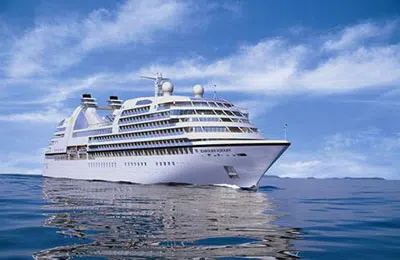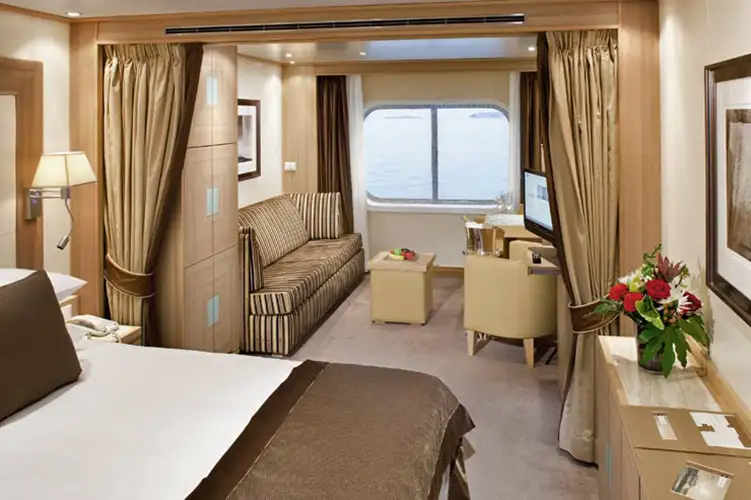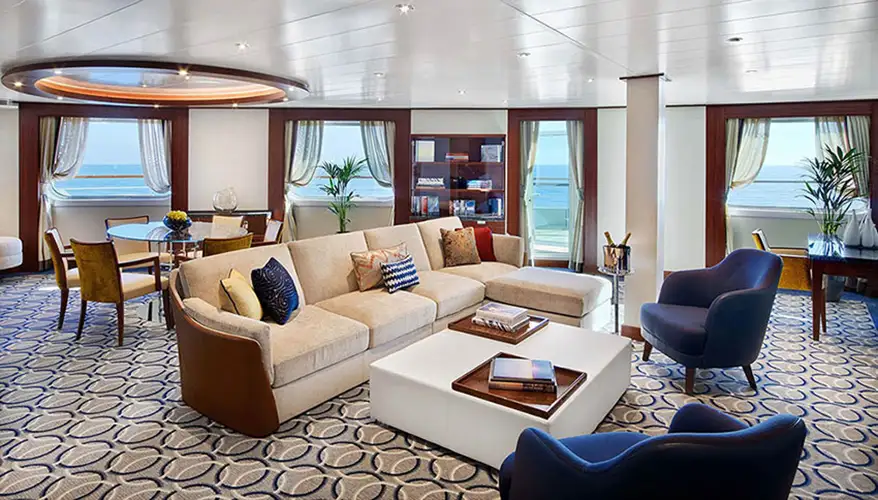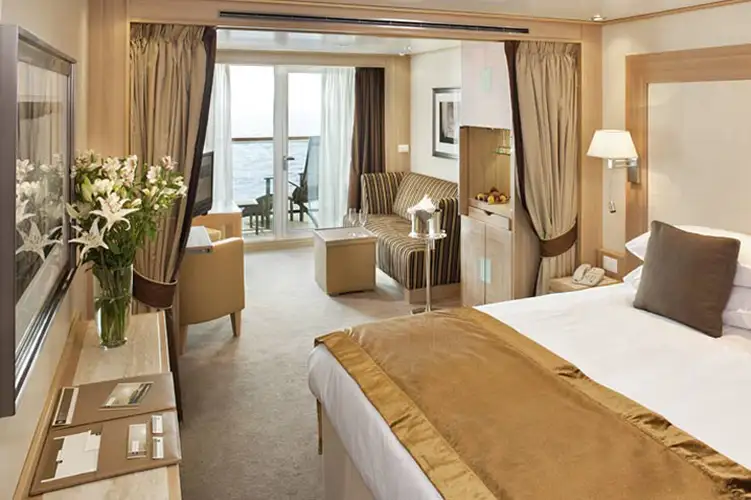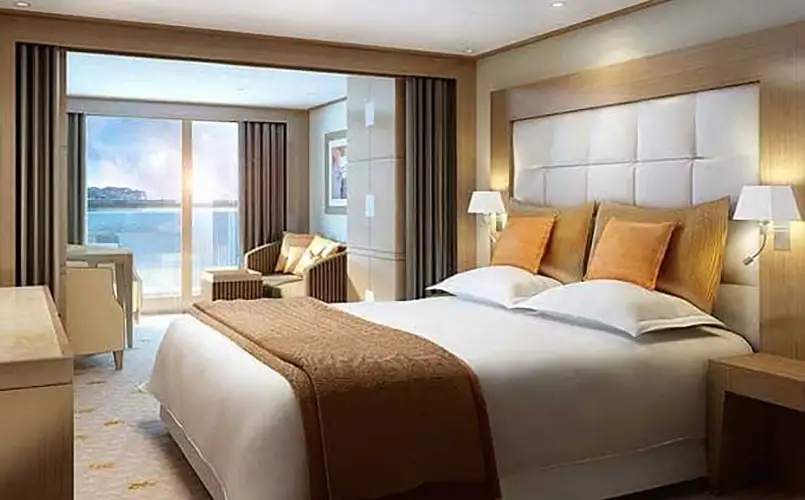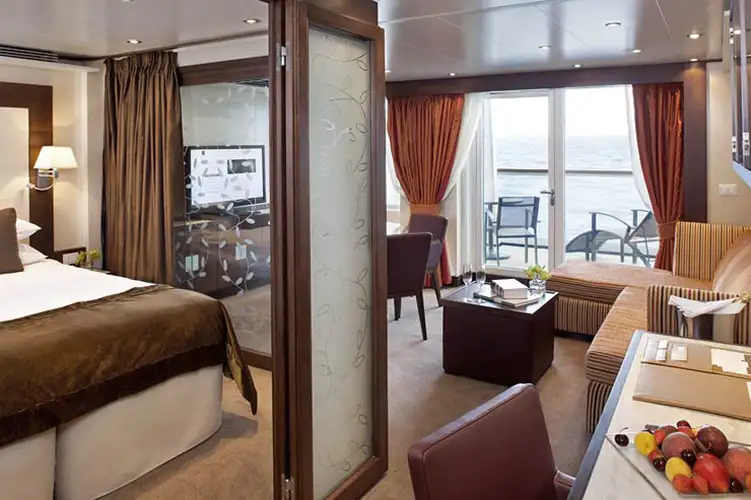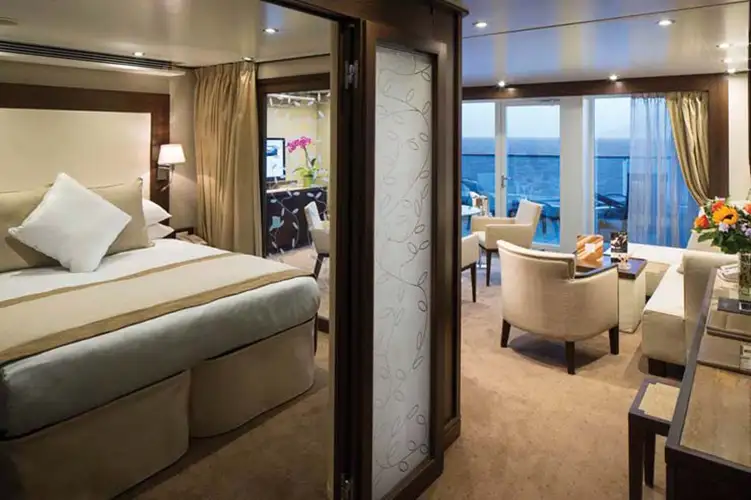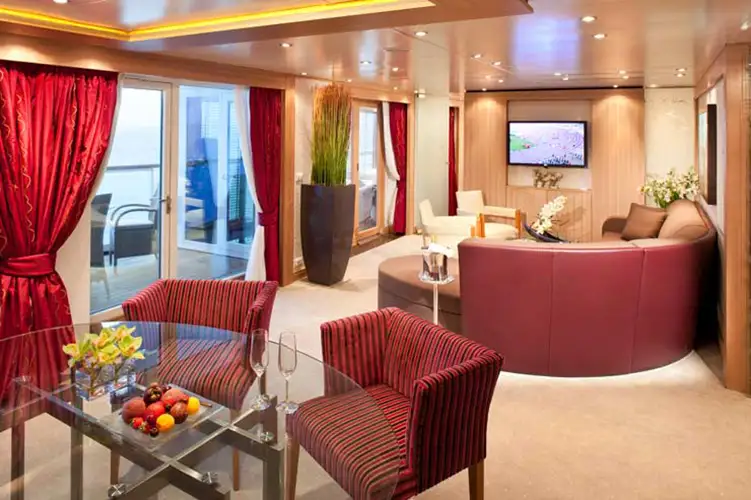Seabourn Ocean Cruises: 35 nights from Miami with Seabourn Quest
Jan 5, 2027
United States, Ecuador, Peru, Chile, French Polynesia
Cruise itinerary
Departure Port: Miami ➞
Landing: Papeete
-
Tuesday, January 5, 2027 - 4:00 PMMiami
-
Wednesday, January 6, 2027Navigation
-
Thursday, January 7, 2027Navigation
-
Friday, January 8, 2027Navigation
-
Saturday, January 9, 2027Navigation
-
Sunday, January 10, 2027Navigation
-
Monday, January 11, 2027Navigation
-
Tuesday, January 12, 2027 5:00 AM - 6:00 PMGuayaquil
-
Wednesday, January 13, 2027 8:00 AM - 5:00 PMPuerto Bolívar
-
Thursday, January 14, 2027Navigation
-
Friday, January 15, 2027Navigation
-
Saturday, January 16, 2027 5:00 AM - not foundLima
-
Sunday, January 17, 2027 not found - 6:00 PMLima
-
Monday, January 18, 2027 7:00 AM - 6:00 PMPisco
-
Tuesday, January 19, 2027Navigation
-
Wednesday, January 20, 2027 12:00 PM - 6:00 PMIquique
-
Thursday, January 21, 2027Navigation
-
Friday, January 22, 2027Navigation
-
Saturday, January 23, 2027Navigation
-
Sunday, January 24, 2027Navigation
-
Monday, January 25, 2027Navigation
-
Tuesday, January 26, 2027Navigation
-
Wednesday, January 27, 2027 7:00 AM - not foundnavigation
-
Thursday, January 28, 2027 not found - 5:00 PMnavigation
-
Friday, January 29, 2027Navigation
-
Saturday, January 30, 2027Navigation
-
Sunday, January 31, 2027Navigation
-
Monday, February 1, 2027Navigation
-
Tuesday, February 2, 2027Navigation
-
Wednesday, February 3, 2027 8:00 AM - 6:00 PMNuku Hiva
-
Thursday, February 4, 2027 8:00 AM - 6:00 PMnavigation
-
Friday, February 5, 2027Navigation
-
Saturday, February 6, 2027 9:00 AM - 6:00 PMFakarava
-
Sunday, February 7, 2027 8:00 AM - 5:00 PMRangiroa
-
Monday, February 8, 2027 9:00 AM - not foundPapeete
-
Tuesday, February 9, 2027 6:00 AMPapeete
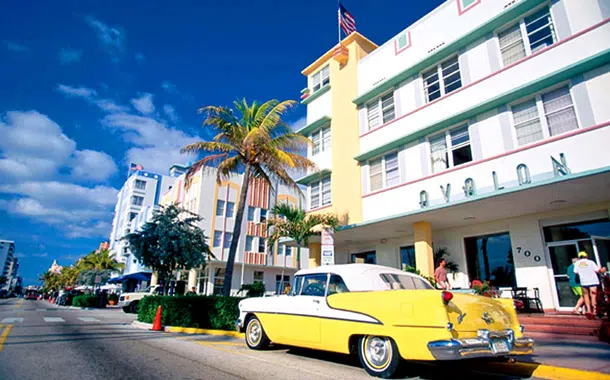
Miami
Cruises departing from Miami: itineraries and offers!Miami is the most important city in Florida and is the ideal departure port for a Caribbean cruise. This city, founded at the end of the 1800s, is cosmopolitan and ready to welcome tourists with maximum comfort. Every day ships from the best companies set sail from Miami with itineraries ranging from 3 to 21 nights: discover all the cruises from Miami on our website and book your next vacation at unbeatable prices!
A Glimpse into Miami's Rich HistoryMiami, a vibrant city known for its dynamic culture and scenic beauty, holds a rich tapestry of history that dates back centuries. Initially inhabited by the Tequesta Native Americans and later claimed by Spain, Miami has transformed from a mangrove swamp into a bustling metropolis. The city's strategic location made it a crucial hub for trade and migration, contributing to its diverse cultural heritage. This fascinating blend of influences is evident in its architecture, traditions, and vibrant communities, making Miami a unique American city with a story to tell at every corner.
The Alluring Climate of MiamiMiami's climate is a major draw for visitors from around the globe. With warm, sunny weather year-round, it offers an eternal summer that appeals to sun-seekers and adventurers alike. The city enjoys a tropical monsoon climate, featuring hot, humid summers and warm, dry winters. This delightful weather allows for a plethora of outdoor activities, from sunbathing on its world-renowned beaches to exploring its lush, tropical landscapes. Miami's inviting climate makes it an ideal destination wishing to escape colder regions, promising a warm welcome in any season.
Must-Visit Attractions and SitesMiami is a treasure trove of attractions, catering to every interest. South Beach, known for its stunning Art Deco architecture and vibrant nightlife, is a must-visit. Art enthusiasts will revel in the colorful street art of Wynwood Walls, while history buffs can explore the ancient Spanish Monastery. For a taste of nature, the Everglades National Park offers thrilling airboat tours. Additionally, Miami serves as a gateway to the Bahamas and the Caribbean, making it a perfect starting point for cruises.
Savoring Miami's Local CuisineThe culinary scene in Miami is as diverse as its population, offering a fusion of flavors from around the world. Cuban influence is paramount, with local staples such as Cubano sandwiches and cafecito. Seafood lovers will delight in the fresh catches available, highlighted in dishes like ceviche and stone crab claws. The city's vibrant food scene is a reflection of its multicultural makeup, offering an adventure for the palate and an essential aspect of the Miami experience.
Embark on a Journey from MiamiFor those enchanted by the allure of the sea, Miami is not just a destination but a beginning. This city, with its state-of-the-art cruise terminals, is a premier starting point for voyages across the Caribbean, Mexico, and beyond. Embracing Miami's eclectic spirit, vibrant culture, and scenic beauty can only be matched by the adventures that await on a cruise originating from this dynamic city. With exclusive deals and packages available, there's no better time to embark on a journey that begins in Miami, promising an unforgettable experience on the high seas.
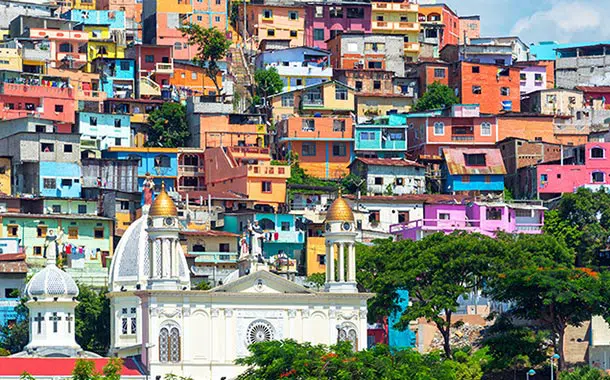
Guayaquil
Explore Ecuador from Guayaquil!Embark on an exciting cruise from Guayaquil, Ecuador's largest city and principal port, situated on the Guayas River. This vibrant city offers a dynamic blend of modern development and historical charm, providing an excellent starting point for exploring the Galapagos Islands or the Pacific coast of South America. Discover its bustling Malecon 2000 and colorful neighborhoods before setting sail on a journey filled with natural wonders and cultural discoveries.

Puerto Bolívar
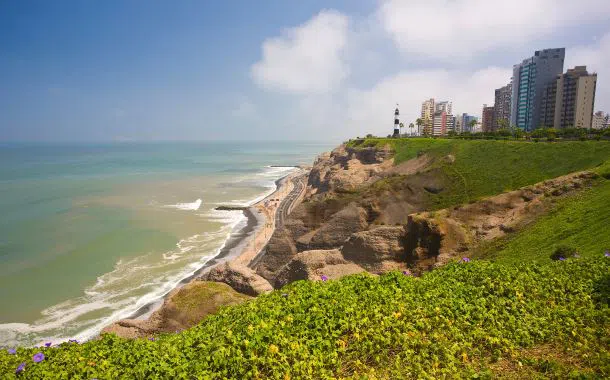
Lima
Located on the Pacific coast of Peru, South America, in a region sheltered from oasis and trade winds, Lima is 12 km from the port of Callao. At the base of the San Cristobal hill, the city is crossed by the Rio Rimac. Called the ‘City of Kings’ by the Spanish conqueror Francisco Pizarro in 1535, Lima was chosen as the capital of the country in 1821, year of its Indipendence. A coastal city that has defended various invasions and welcomed many cultures. On the one hand, the traces of its past are still visible, for example among various monuments and buildings. On the other hand, the city fully assumes its position as a modern Peruvian capital. Developed strongly on industry and tourism, continuing to attract masses, Miraflores and San Isidro are the hub of Lima's social and commercial life. Known for its legendary fog, it has a special charm of colour and animation. Discover its historic center, a great spectacle of colonial architecture, including ‘Paseo de la Republica’, San Martin Square, Plaza de Armas and surrounding monuments: the Government Palace, the Cathedral, the Archbishop's Palace, the Forsaken train station, and the Moorish-Spanish colonial houses. Decorated with beautiful carved wooden balconies along the old streets, you will be captivated by the combination of its past and 21st century modernity. Strolling through the historic center, you will taste traditional dishes and be greeted by a truly warm population! Between May and mid-September, the city of Lima is prone to humidity and clouds. November to April are the best months to visit the capital, from January to March the heat is very high.Located on the coast of the Pacific in Peru, South America, in a region sheltered from oases and trade winds, Lima is 12 km from the port of Callao. At the foot of the San Cristobal hill, the city is crossed by the Rimac River. Called the "City of Kings" by the Spanish conqueror Francisco Pizarro in 1535, Lima was chosen as the capital since the country's independence in 1821. Coastal city that has defended the various invasions and welcomed many cultures, it bears the traces of the past (including various monuments and buildings) and fully assumes its position as the Peruvian capital. Strongly developed in the industry and tourism sector, continuing to attract the masses, Miraflores and San Isidro are the focus of Lima's social and commercial life. Known for its legendary fog, it has a special charm, made up of colors and animations. You will discover its historic center, a great show of colonial architecture, including "Paseo de la Republica", Plaza San Martin, Plaza de Armas, and surrounding monuments: the Government Palace, the Cathedral, the Archbishop's Palace, the Forsaken railway station, and the colonial houses in Moorish-Spanish style. Decorated with splendid carved wooden balconies, along the old streets, they will fascinate you thanks to its elusive mix of Spanish history and the modernity of the 21st century. Strolling through the historic center, you will taste traditional dishes and be welcomed by a truly warm population! Between May and mid-September, the city of Lima is subject to humidity and clouds. From November to April are the best months to visit the capital, from January to March the heat is very high.

Lima
Located on the Pacific coast of Peru, South America, in a region sheltered from oasis and trade winds, Lima is 12 km from the port of Callao. At the base of the San Cristobal hill, the city is crossed by the Rio Rimac. Called the ‘City of Kings’ by the Spanish conqueror Francisco Pizarro in 1535, Lima was chosen as the capital of the country in 1821, year of its Indipendence. A coastal city that has defended various invasions and welcomed many cultures. On the one hand, the traces of its past are still visible, for example among various monuments and buildings. On the other hand, the city fully assumes its position as a modern Peruvian capital. Developed strongly on industry and tourism, continuing to attract masses, Miraflores and San Isidro are the hub of Lima's social and commercial life. Known for its legendary fog, it has a special charm of colour and animation. Discover its historic center, a great spectacle of colonial architecture, including ‘Paseo de la Republica’, San Martin Square, Plaza de Armas and surrounding monuments: the Government Palace, the Cathedral, the Archbishop's Palace, the Forsaken train station, and the Moorish-Spanish colonial houses. Decorated with beautiful carved wooden balconies along the old streets, you will be captivated by the combination of its past and 21st century modernity. Strolling through the historic center, you will taste traditional dishes and be greeted by a truly warm population! Between May and mid-September, the city of Lima is prone to humidity and clouds. November to April are the best months to visit the capital, from January to March the heat is very high.Located on the coast of the Pacific in Peru, South America, in a region sheltered from oases and trade winds, Lima is 12 km from the port of Callao. At the foot of the San Cristobal hill, the city is crossed by the Rimac River. Called the "City of Kings" by the Spanish conqueror Francisco Pizarro in 1535, Lima was chosen as the capital since the country's independence in 1821. Coastal city that has defended the various invasions and welcomed many cultures, it bears the traces of the past (including various monuments and buildings) and fully assumes its position as the Peruvian capital. Strongly developed in the industry and tourism sector, continuing to attract the masses, Miraflores and San Isidro are the focus of Lima's social and commercial life. Known for its legendary fog, it has a special charm, made up of colors and animations. You will discover its historic center, a great show of colonial architecture, including "Paseo de la Republica", Plaza San Martin, Plaza de Armas, and surrounding monuments: the Government Palace, the Cathedral, the Archbishop's Palace, the Forsaken railway station, and the colonial houses in Moorish-Spanish style. Decorated with splendid carved wooden balconies, along the old streets, they will fascinate you thanks to its elusive mix of Spanish history and the modernity of the 21st century. Strolling through the historic center, you will taste traditional dishes and be welcomed by a truly warm population! Between May and mid-September, the city of Lima is subject to humidity and clouds. From November to April are the best months to visit the capital, from January to March the heat is very high.
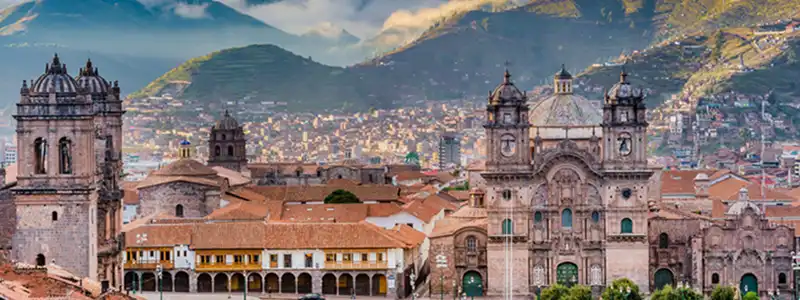
Pisco
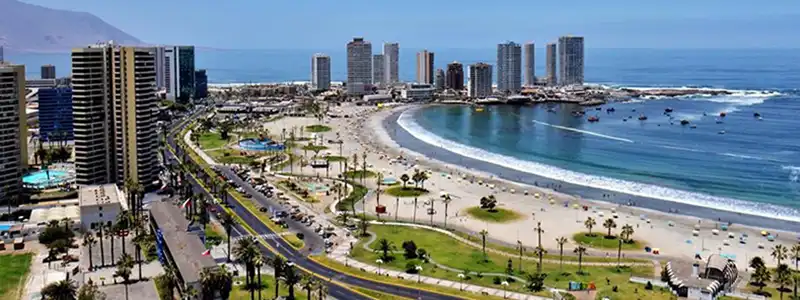
Iquique
Iquique is a city in northern Chile and a bishopric overlooking the Pacific Ocean. It is the capital of the Tarapacá Region (First Region of Chile) and the Province of Iquique and has approximately 221,000 inhabitants.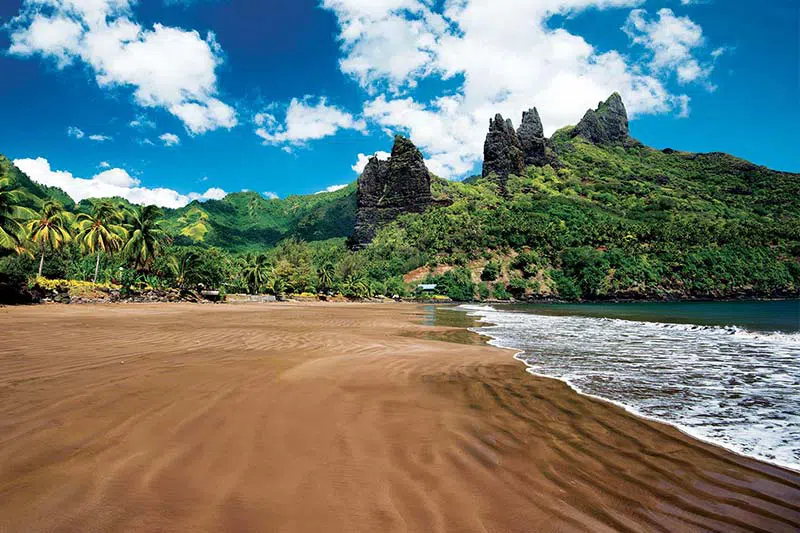
Nuku Hiva
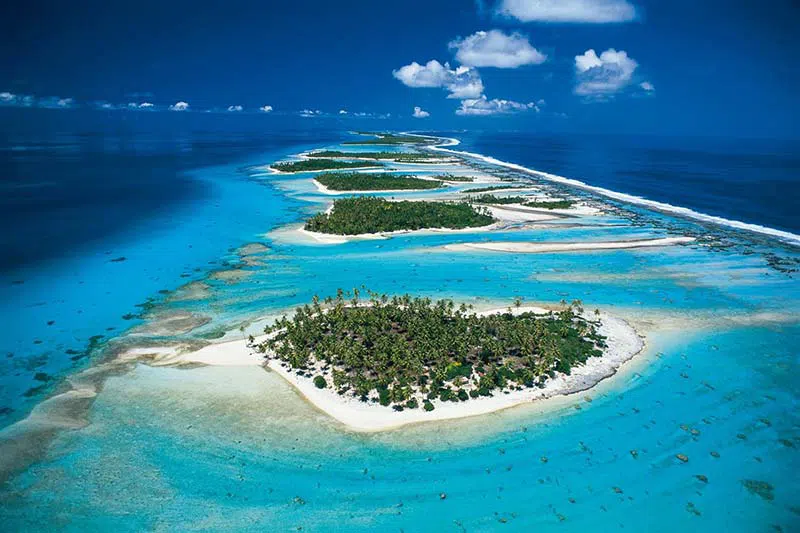
Fakarava
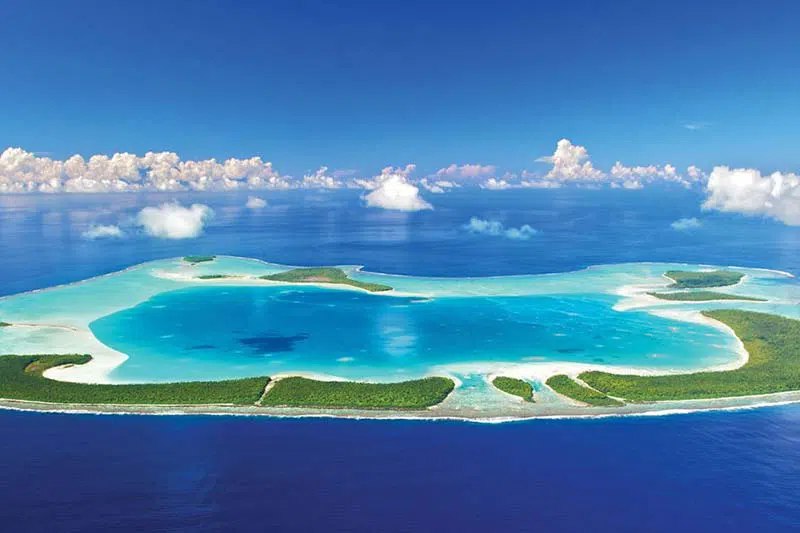
Rangiroa

Papeete
Papeete, whose name means "water vessel" in the local language, is the capital of French Polynesia, located on the island of Tahiti. Papeete has history, cultural heritage and natural beauty, making it an unmissable place for anyone who wants to explore the magic of Tahiti and French Polynesia. Its history originated at the beginning of the 19th century. The first European explorers, such as Captain James Cook, visited Tahiti as early as the 18th century.
Not long after, Papeete became an important commercial and administrative center of the region. France established a protectorate on the island in 1842, and chose Papeete as the capital of French Polynesia. The atmosphere of Papeete mixes Polynesian relaxation with French style. The city is famous for its wild parties and traditional dances, such as 'ori (Tahitian dance), which you can admire in numerous cultural festivals that are frequently held in the city. Polynesian mythology plays a significant role in the cultural life of Papeete, with many local legends handed down over the centuries. One of the best known myths is the legend of the god Tane, the creator of light, sun and life (a version of Ra of ancient Egypt in the South Pacific). These myths are reflected in the art and music of the region and remain an important part of Tahiti's cultural heritage.
The Central Market of Papeete, or Marché de Papeete, is an important point of interest. Here, you can find fresh fruit, vegetables, fish, flowers and discover local traditional crafts and souvenirs. Papeete boasts interesting museums, such as the Museum of Tahiti and its Islands, where you can learn more about the history and culture of the region. Don't miss the Polynesian Art Gallery to see the work of local artists. Surrounded by beautiful lagoons and coral reefs, Papeete is an ideal place for lovers of water sports, such as diving and snorkeling.
If you are a nature lover it is absolutely worth visiting the waterfalls and tropical forests located nearby. Seafood plays a central role in local cuisine in Papeete. One of the national dishes is poisson cru, raw fresh fish marinated in lime juice, mixed with coconut milk, vegetables and spices. Papeete is an important port for cruise ships in the South Pacific.
The port always welcomes numerous cruise ships, offering passengers the opportunity to explore the city and its surroundings. Cruises departing from or stopping in Papeete often include itineraries through places like Bora Bora, Moorea, and Huahine, so you can truly immerse yourself in the beauty and culture of French Polynesia.

Papeete
Papeete, whose name means "water vessel" in the local language, is the capital of French Polynesia, located on the island of Tahiti. Papeete has history, cultural heritage and natural beauty, making it an unmissable place for anyone who wants to explore the magic of Tahiti and French Polynesia. Its history originated at the beginning of the 19th century. The first European explorers, such as Captain James Cook, visited Tahiti as early as the 18th century.
Not long after, Papeete became an important commercial and administrative center of the region. France established a protectorate on the island in 1842, and chose Papeete as the capital of French Polynesia. The atmosphere of Papeete mixes Polynesian relaxation with French style. The city is famous for its wild parties and traditional dances, such as 'ori (Tahitian dance), which you can admire in numerous cultural festivals that are frequently held in the city. Polynesian mythology plays a significant role in the cultural life of Papeete, with many local legends handed down over the centuries. One of the best known myths is the legend of the god Tane, the creator of light, sun and life (a version of Ra of ancient Egypt in the South Pacific). These myths are reflected in the art and music of the region and remain an important part of Tahiti's cultural heritage.
The Central Market of Papeete, or Marché de Papeete, is an important point of interest. Here, you can find fresh fruit, vegetables, fish, flowers and discover local traditional crafts and souvenirs. Papeete boasts interesting museums, such as the Museum of Tahiti and its Islands, where you can learn more about the history and culture of the region. Don't miss the Polynesian Art Gallery to see the work of local artists. Surrounded by beautiful lagoons and coral reefs, Papeete is an ideal place for lovers of water sports, such as diving and snorkeling.
If you are a nature lover it is absolutely worth visiting the waterfalls and tropical forests located nearby. Seafood plays a central role in local cuisine in Papeete. One of the national dishes is poisson cru, raw fresh fish marinated in lime juice, mixed with coconut milk, vegetables and spices. Papeete is an important port for cruise ships in the South Pacific.
The port always welcomes numerous cruise ships, offering passengers the opportunity to explore the city and its surroundings. Cruises departing from or stopping in Papeete often include itineraries through places like Bora Bora, Moorea, and Huahine, so you can truly immerse yourself in the beauty and culture of French Polynesia.
